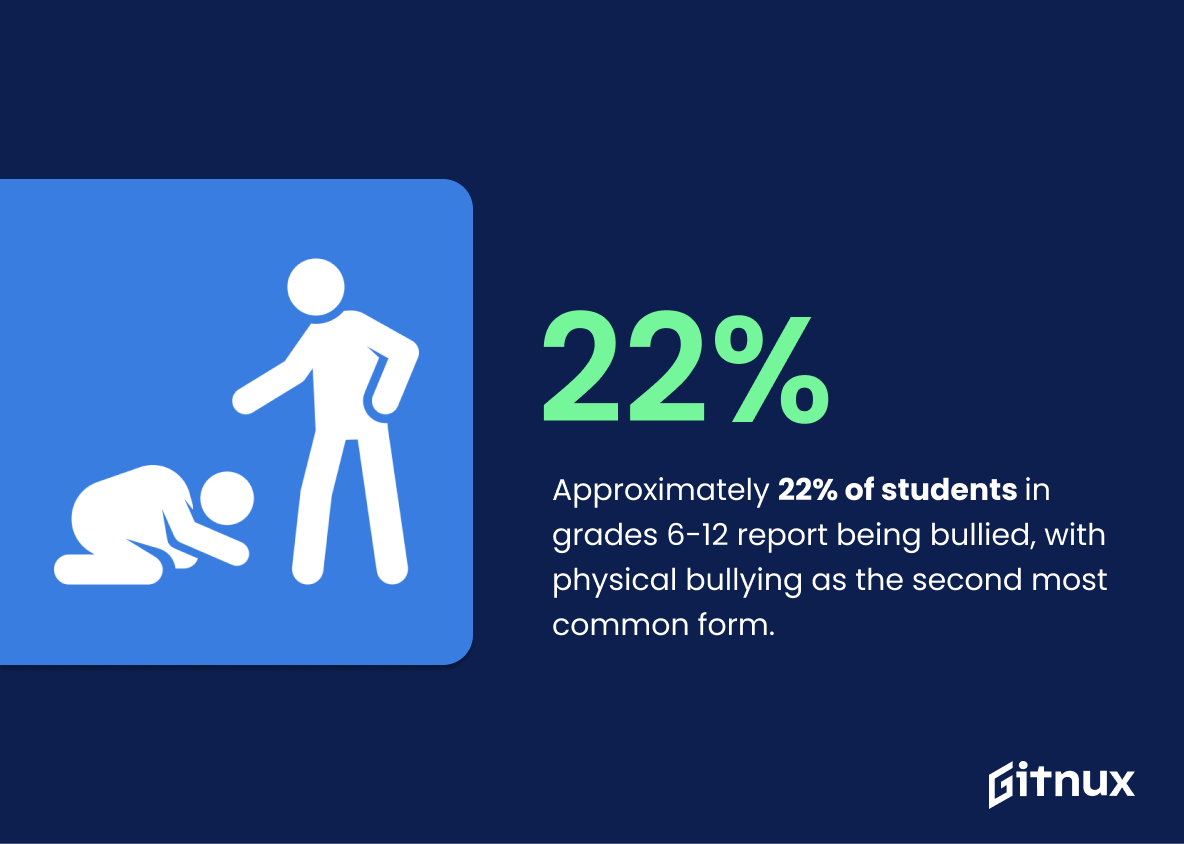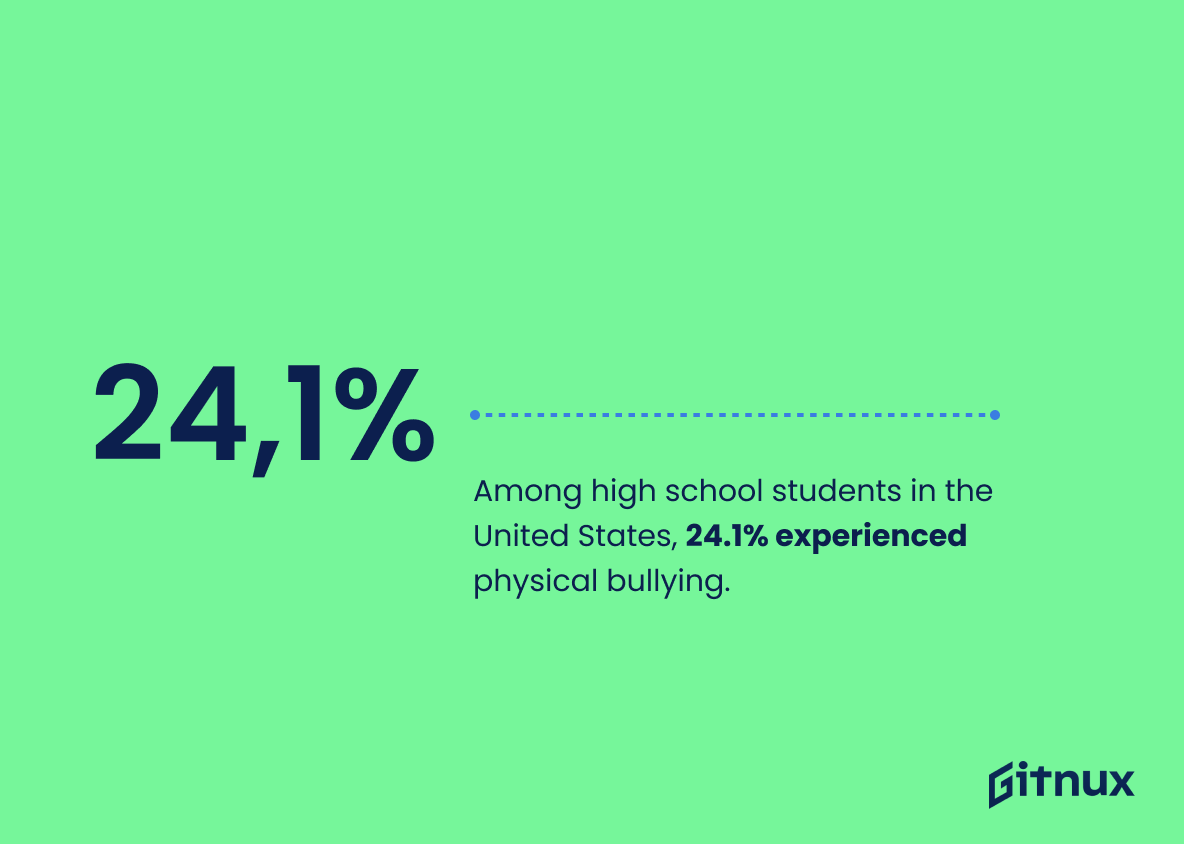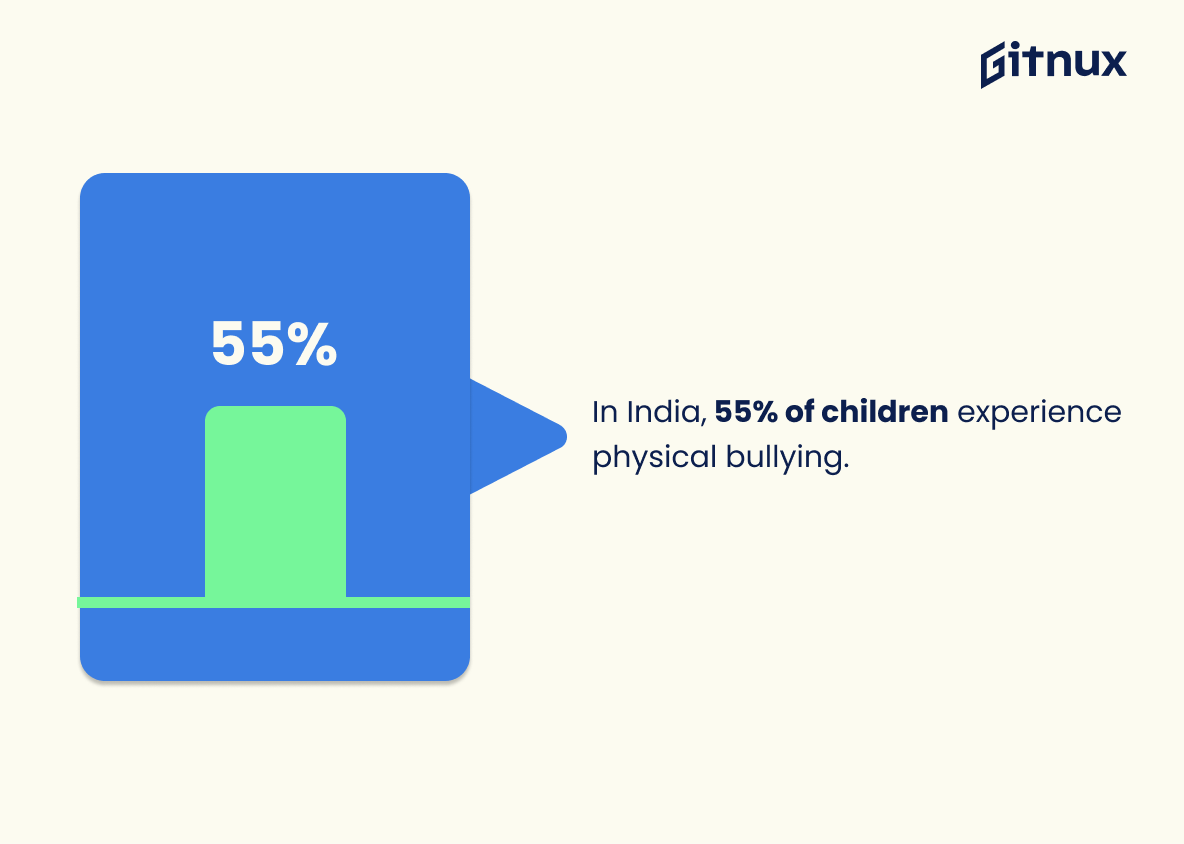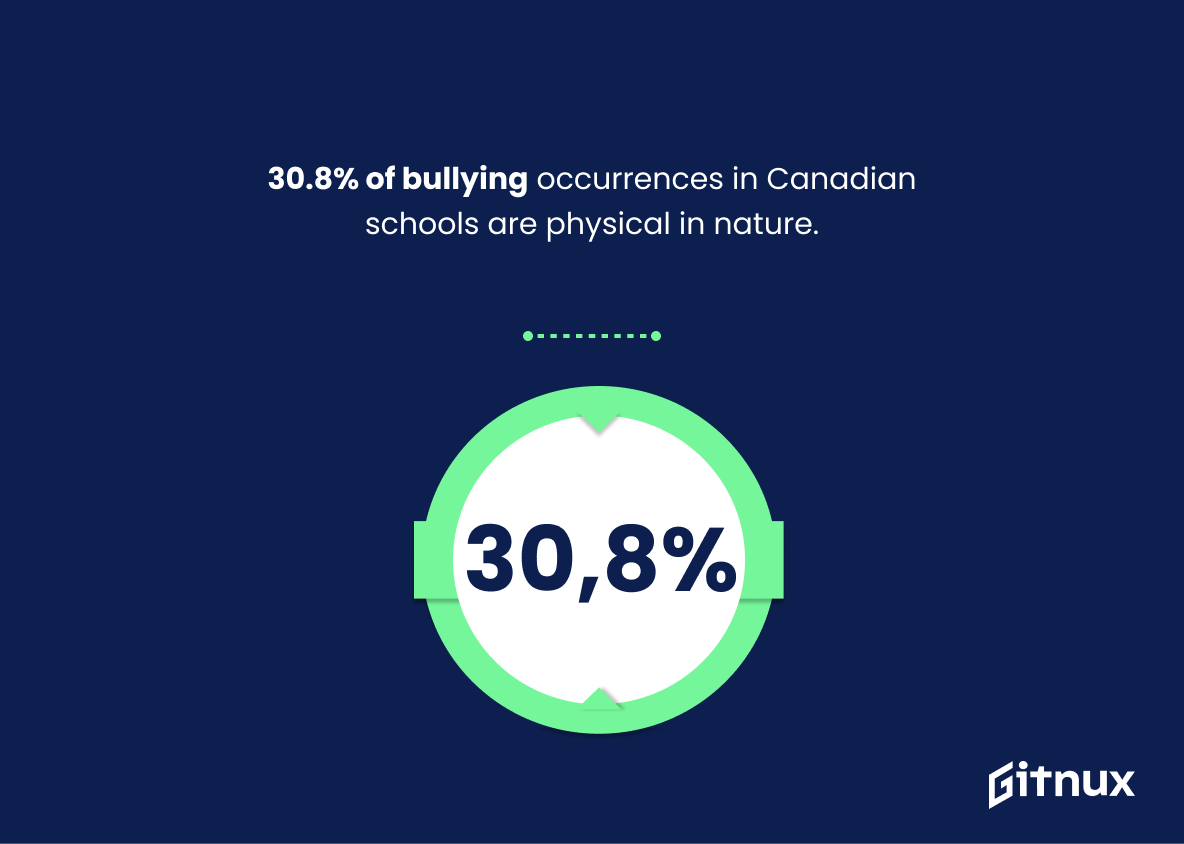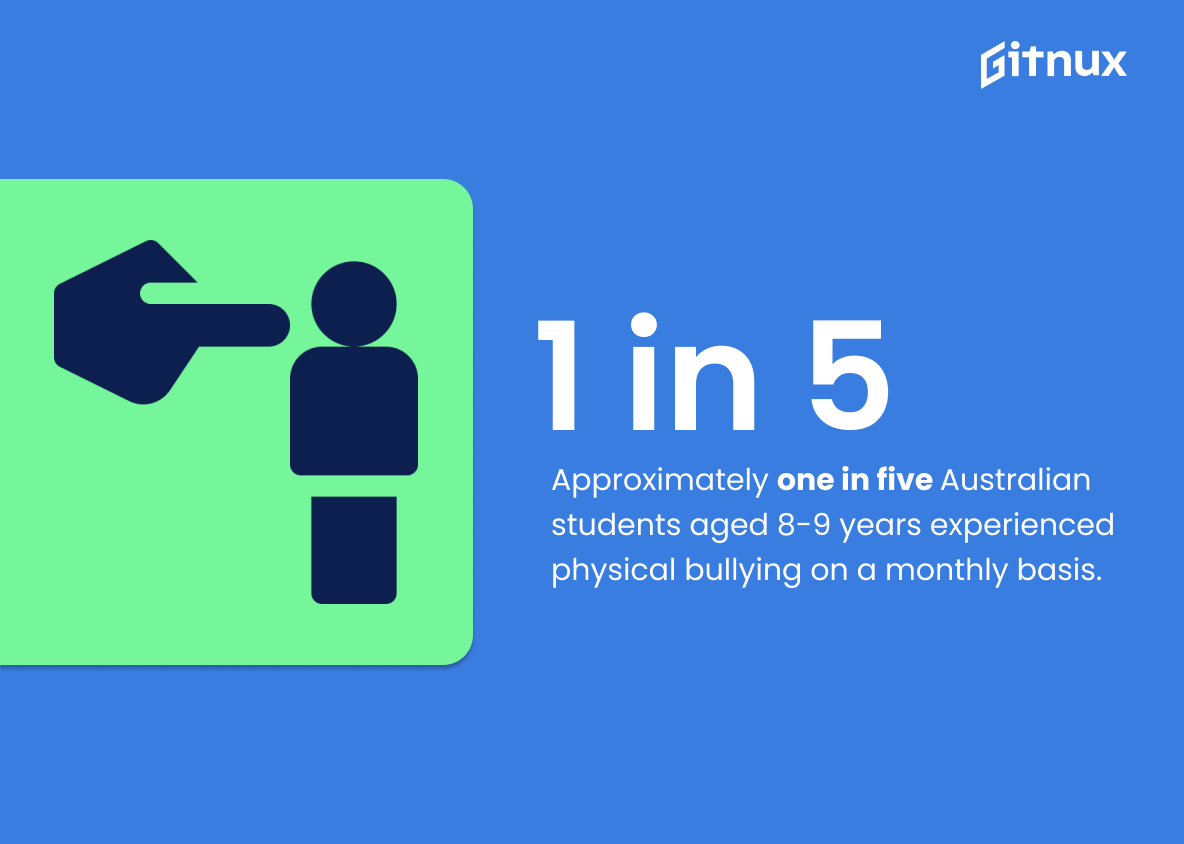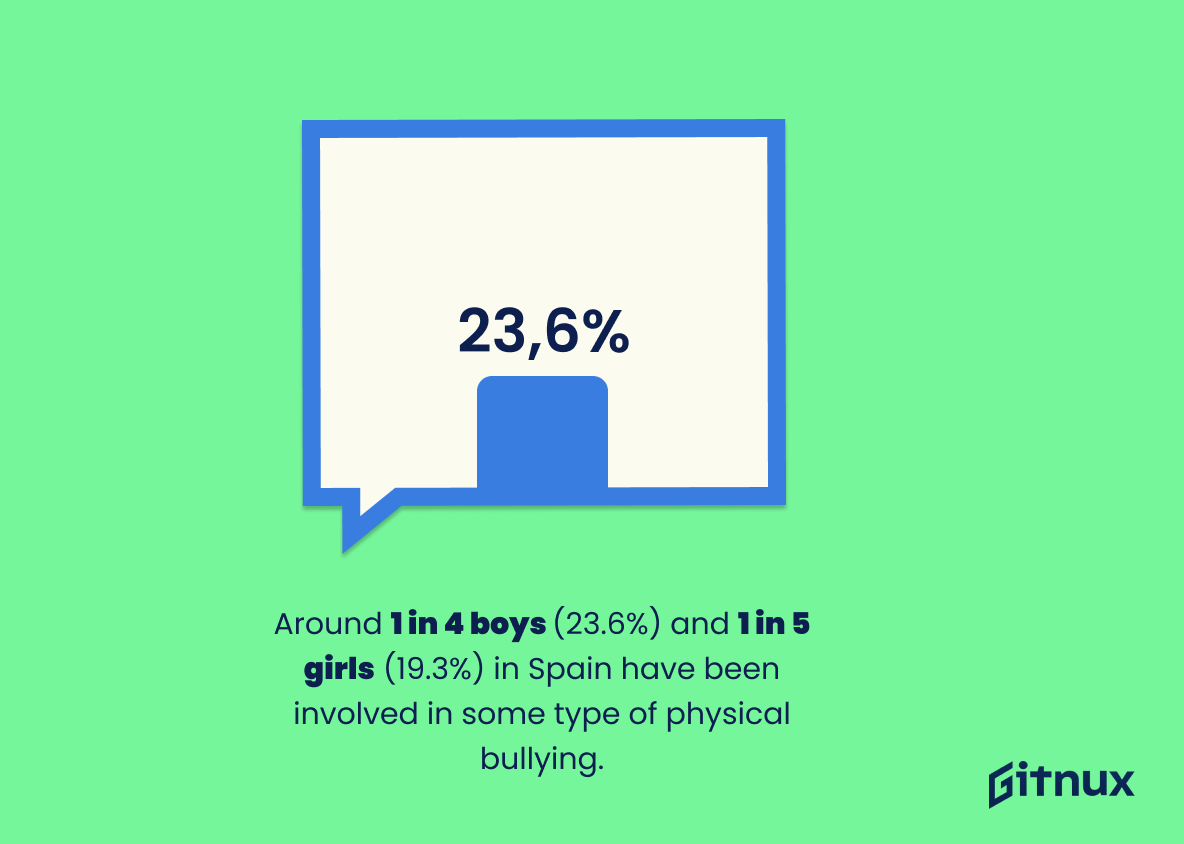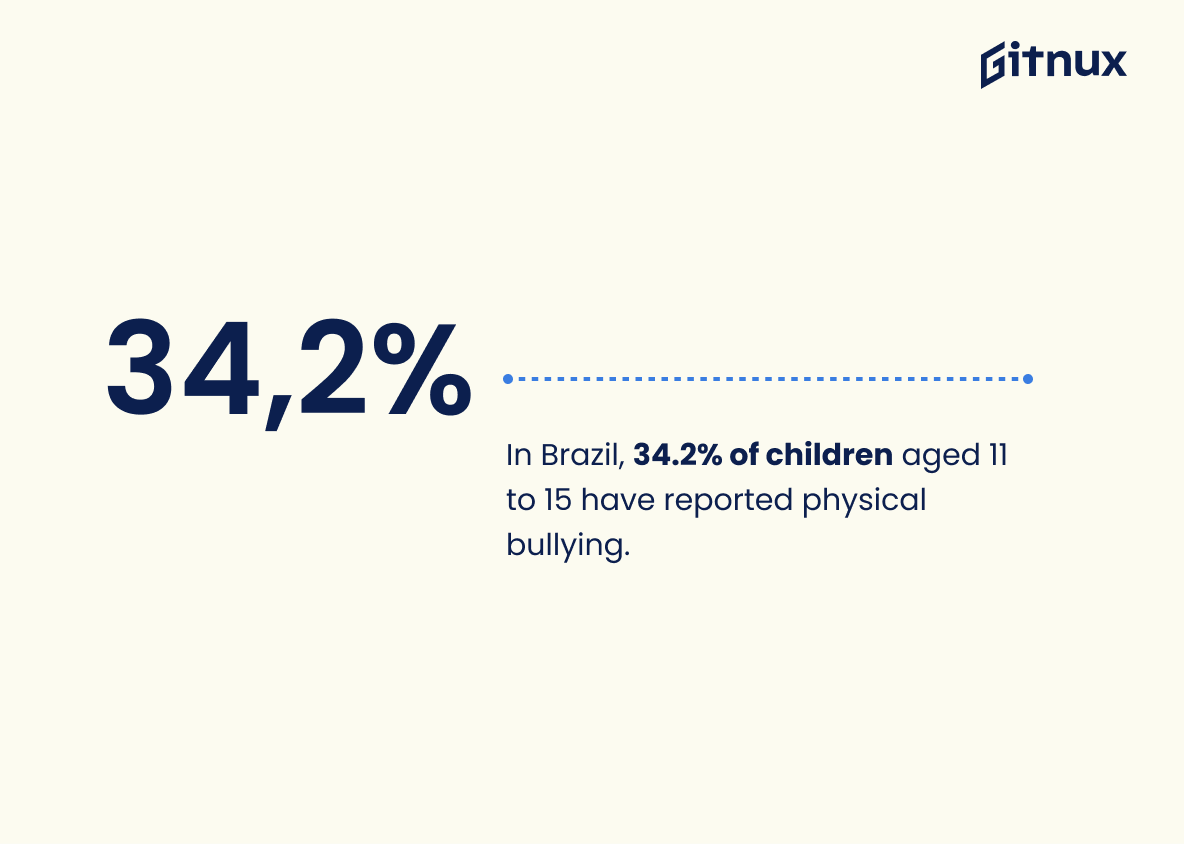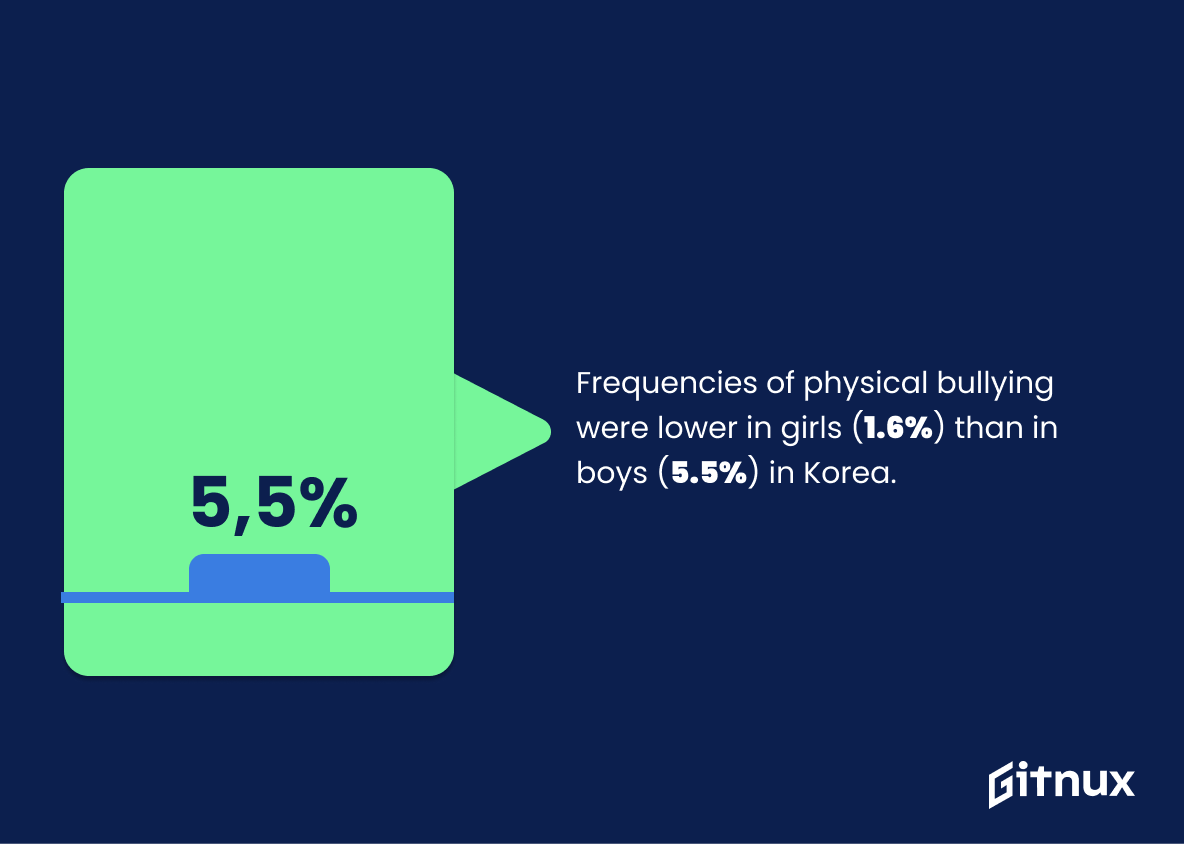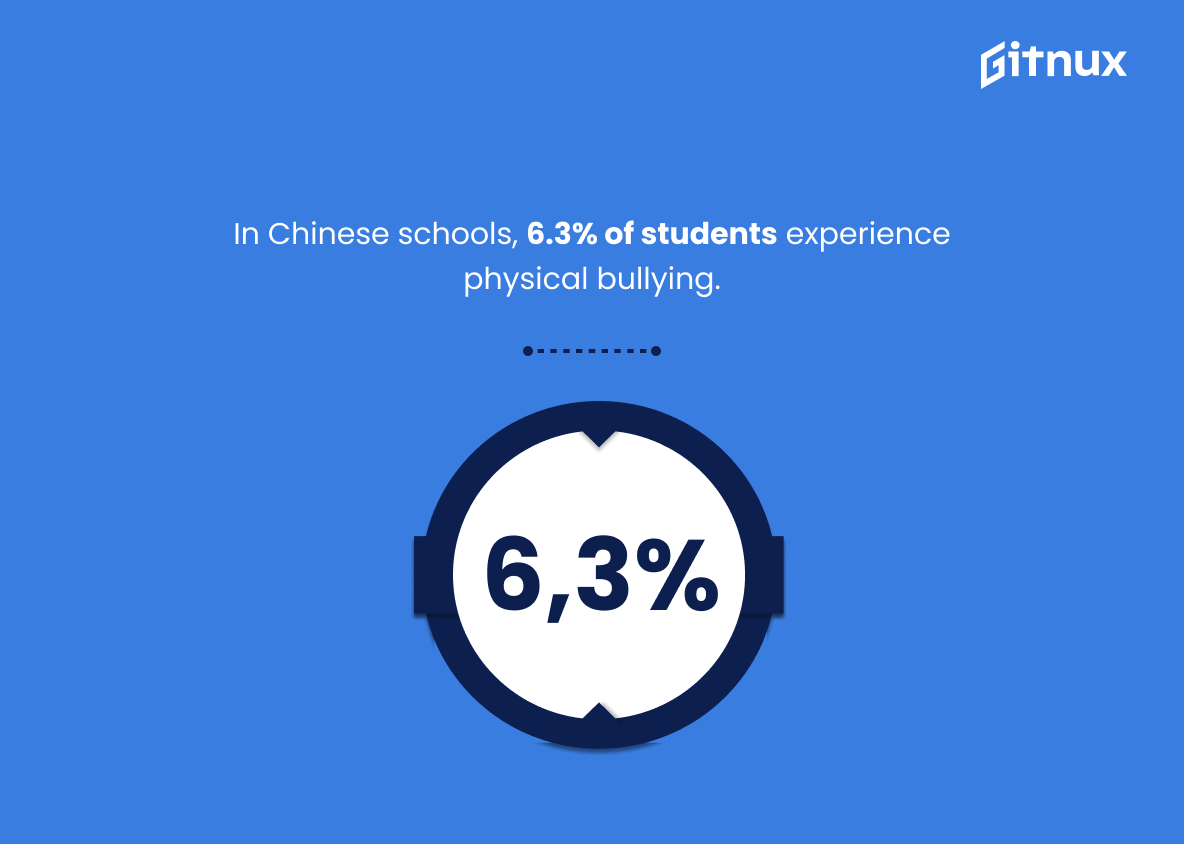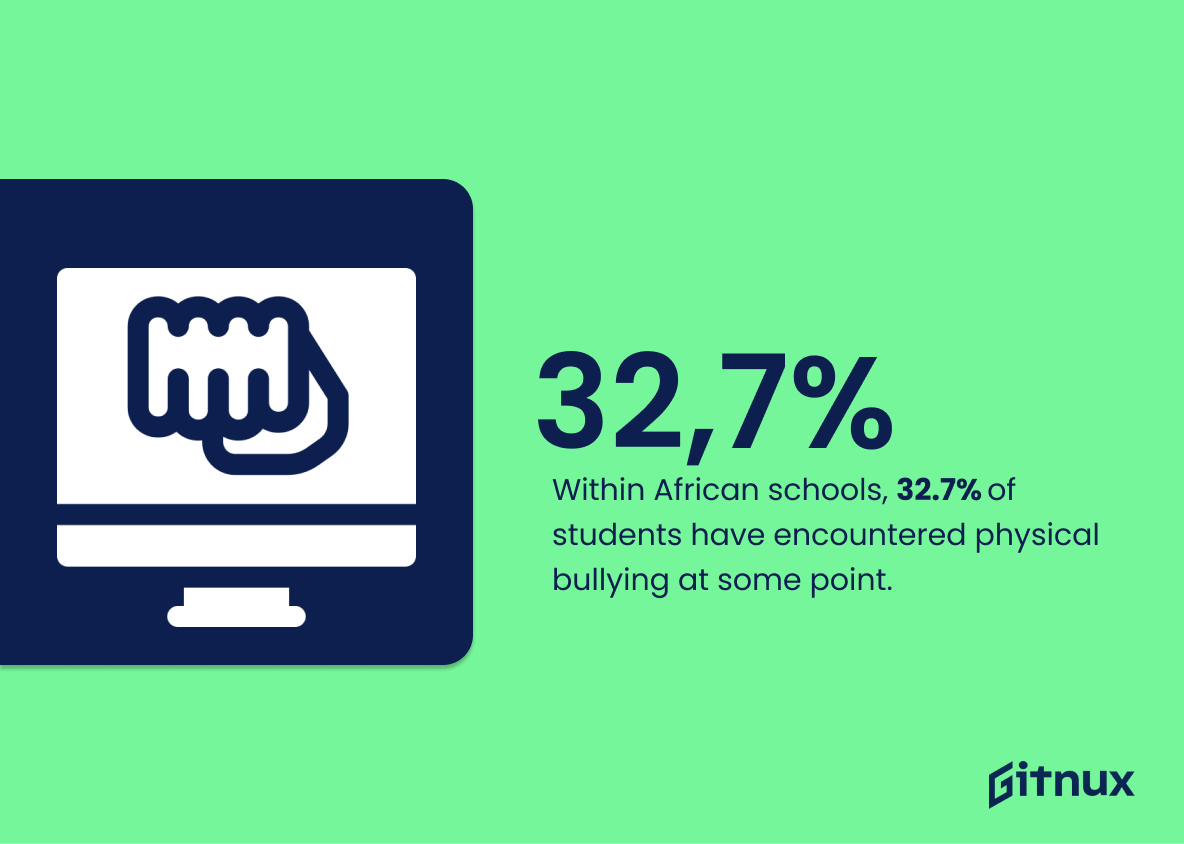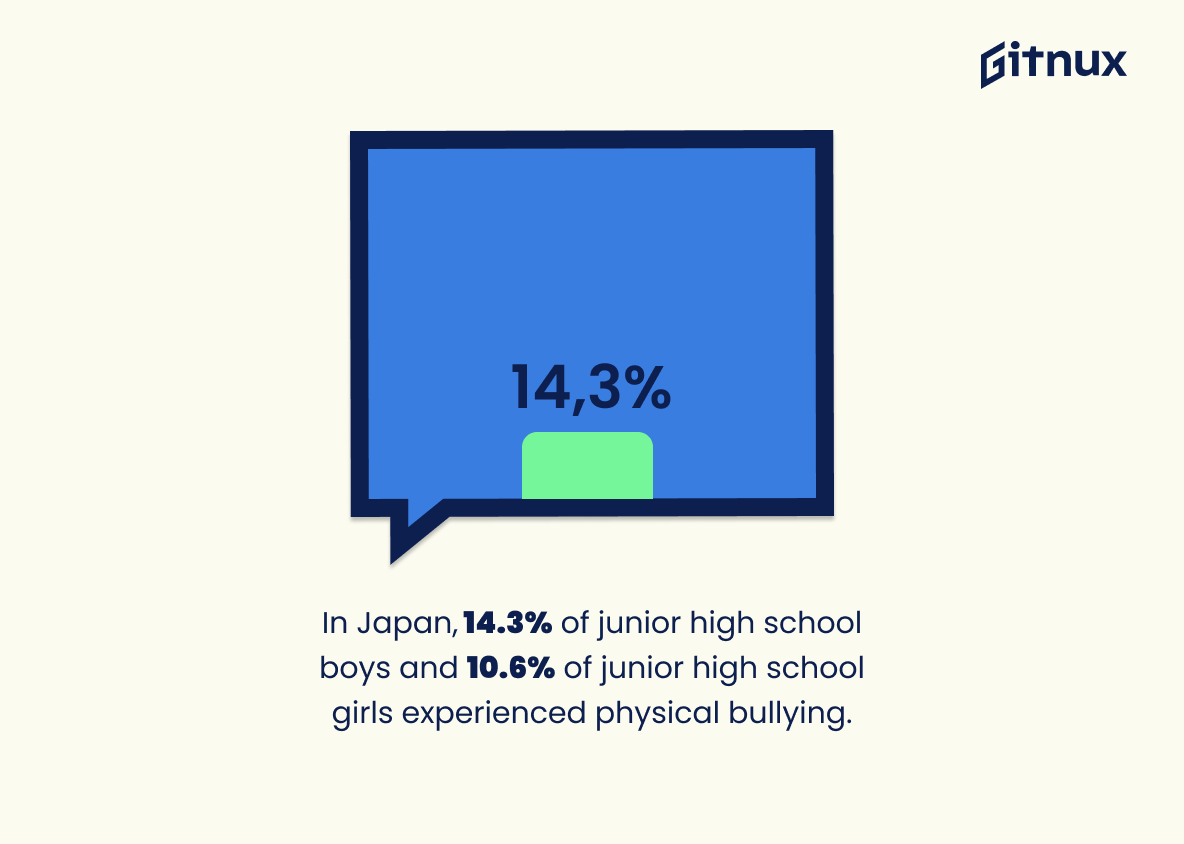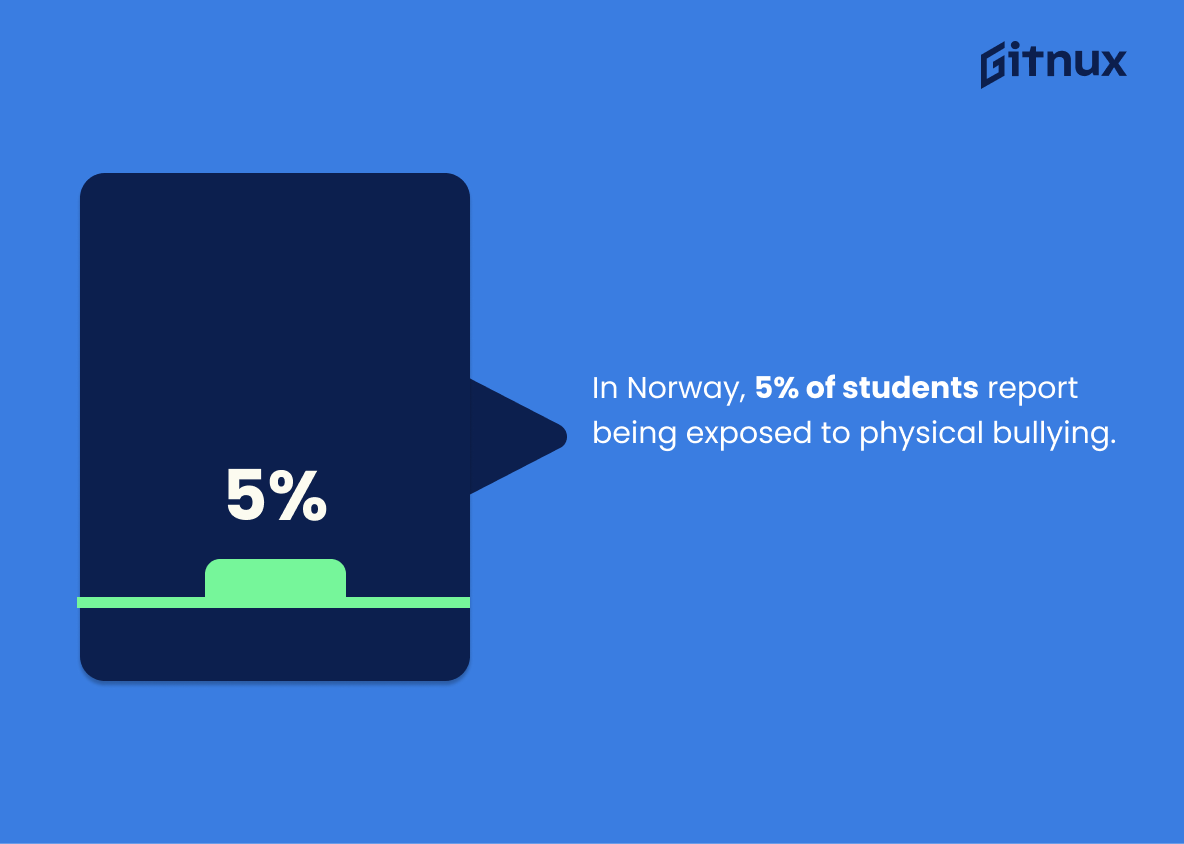The sweeping tide of digitalization may lead us to believe that physical bullying is a problem from a bygone era — but the harsh reality contradicts this assumption. Physical bullying continues to be a prevalent and pervasive issue in our society, threatening the healthy development of adolescents in schools and neighborhoods. This blog post will delve deep into current physical bullying statistics, shining a light on the magnitude of this menacing issue, and initiating an informed conversation about its prevention. Amid an increasing trend of cyberbullying, understanding the scope and impact of its real-life counterpart is as vital as ever. Step into this stark reality as we present the cold, hard facts about physical bullying.
The Latest Physical Bullying Statistics Unveiled
Among students in grades 6–12, approximately 22% report being bullied at school within the past academic year. Physical bullying is the second most common form of bullying experienced by students.
In the grand opera of academia, this 22% of students in grades 6-12 reporting being bullied at school illuminates a poignant aria that cannot be ignored. It whispers a hidden narrative that physical bullying has the second lead, trailing behind the most prevalent form of bullying experienced by students. This number resonates within the context of a blog post about Physical Bullying Statistics, shedding light on the prevalence of the issue. By peeling back the curtain on the world of bullying, it offers both a sobering reality and a call to action. A discussion on these statistics can nudge the development of strategic policies and relevant interventions, aiming to bring about the final curtain call on all forms of bullying.
Globally, 35.4% of boys in middle school experience physical bullying.
Painting a somber picture of the global bullying scenario, the data reveals that over a third of middle school boys around the world are victims of physical bullying. These alarming rates are a wake-up call, asserting the urgent need for comprehensive international anti-bullying policies in educational institutions. Spotlighting boys, Proliferating unpleasant experiences in their nascent learning phase, such bullying could stifle their psychological growth and academic escalation. Consequently, the figure urges an in-depth scrutiny into the factors contributing to such aggressive behaviors and the potential solutions, making it an inevitable centerpiece in any discourse about physical bullying statistics.
Among high school students in the United States, 24.1% experienced physical bullying.
The statistic—among high school students in the United States, 24.1% experienced physical bullying—serves as a stark bright-red signal on the roadmap of physical bullying in schools, placing emphasis on the gravity of the situation. It illuminates the alarming extent of influence bullying exerts within the educational system, making it impossible to sidestep. With nearly a quarter of high-schoolers victim to such torment, it’s apparent that physical bullying has infiltrated the society, inviting a loud outcry for immediate action. The sheer gravity represented by this single number transcends mere digits, encapsulating untold stories of student experiences, invoking an urgent need for anti-bullying strategies, and reinforcing the significance of each word penned down in this blog post on physical bullying statistics.
In India, 55% of children experience physical bullying.
Drawing attention to the sheer magnitude of physical bullying in India, where over half of all children bear the brunt of this disturbing behavior, adds a deeply impactful perspective in our blog post about Physical Bullying Statistics. Showcasing this startling statistic serves to illuminate the immense scale and severity of the issue, not just in isolation, but as a testament to its global prevalence. It bolsters the urgency and importance of concerted action against such violent acts, emphasizing the need for effective strategies and stringent measures to curb physical bullying in India’s educational and social spheres. By doing so, it promotes broader understanding, awareness and empathy, fostering collective intervention for victim support and bully deterrence.
30.8% of bullying occurrences in Canadian schools are physical in nature.
Highlighting that nearly one-third of bullying incidents in Canadian schools manifest physically underpins the gravity and pervasiveness of this issue. This figure serves as a striking spotlight in the landscape of a blog post on Physical Bullying Statistics, anchoring the discussion and drawing readers’ focus to the prevalence of this pressing issue. Through this statistic, it creates a stark reality check – a tangible representation of the otherwise abstract concept of bullying, offering readers a clear understanding of the broadscale severity of physical bullying in Canadian education environments. It underscores the urgency for solutions and promotes informed discussion about preventative strategies and responses.
Approximately one in five Australian students aged 8-9 years experienced physical bullying on a monthly basis.
Delving into the raw numbers exposes a concerning reality – an alarming one fifth of young Australian students, aged only 8-9 years, confront physical bullying on a regular basis. This quote unveils a harsh truth faced by our children and further underscores the gravity and prevalence of this societal issue. In a blog post dedicated to dissecting global physical bullying statistics, this piece of data is particularly relevant as it offers a glimpse into how this epidemic is unraveling within the Australian school system – a warning signal for parents, educators, and policymakers alike. It presents a call to action for widespread advocacy, preventive strategies, and robust support systems to combat this alarming trend and create safer learning environments for our children.
Around 1 in 4 boys (23.6%) and 1 in 5 girls (19.3%) in Spain have been involved in some type of physical bullying.
Highlighting this noteworthy finding surges to the forefront of our conversation on physical bullying statistics for a substantial reason. It uncovers a compelling truth about the prevalence of bullying in Spain’s youth culture, particularly digging deep into the gender differentials. Unveiling a concerning issue, it reveals that nearly a quarter of boys and a fifth of girls have had dreadful encounters with physical bullying. This figure not only gives a clear-cut vision of the situation in Spain but also prompts readers to introspect on the alarming rise in bullying instances worldwide, laying a solid foundation for a profound discussion on possible preventive strategies and mitigation plans.
In Brazil, 34.2% of children aged 11 to 15 have reported physical bullying.
This alarming figure of 34.2% reports of physical bullying among children aged 11 to 15 in Brazil punctuates the gravity of the bullying phenomenon on a global scale. It underscores the stark reality that this torment preys upon a significant share of youth in Brazil, highlighting the urgency and imperative nature of the issue. In the narrative of a blog post about Physical Bullying Statistics, this statistic serves as a stirring wake-up call, capturing a quantifiable snapshot of a heartbreaking ordeal that has necessitated an escalated response from society, educators, and policymakers. Furthermore, it provides an international context, indicative of how widespread and pervasive this problem is worldwide, even outside more commonly discussed western regions.
Frequencies of physical bullying were lower in girls (1.6%) than in boys (5.5%) in Korea.
Shining a spotlight on the comparative figures of physical bullying between girls and boys in Korea can provide illuminating insights. It helps to uncover the depth and dimension of how physical bullying permeates through different genders. We’re conveyed an image of a noticeably lower frequency among girls at 1.6%, contrasted with a higher 5.5% incidence in boys. Picturing these contrasting figures helps map out this pervasive issue more tangibly, providing readers a more nuanced understanding of the gender differences in Korean bullying scenarios. Moreover, it offers cues to educators and policymakers towards tailoring targeted, gender-sensitive interventions to counteract bullying.
In Chinese schools, 6.3% of students experience physical bullying.
Delving into the depths of worldwide physical bullying statistics, the data divulges a noteworthy revelation. A chilling 6.3% of students in Chinese schools aren’t merely navigating academic pressures; they face a tangible menace, physical bullying. This figure acts as a lens, spotlighting the critical nature of physical bullying in a top-performing educational context like China. Such illumination invites a broader discourse, fostering understanding and demanding strategic initiatives to curb not only the evident physical harm but also the psychological trauma that likely shadows these victims beyond classroom boundaries. Therefore, this statistic holds an influential place in a blog post about Physical Bullying Statistics, urging global attention towards the issue.
Within African schools, 32.7% of students have encountered physical bullying at some point.
Shining a light on the sobering reality that almost one in three students within African schools have experienced physical bullying, this statistic stands as a stark call to action in the battle against this pressing issue. Acting as a mirror to society’s inner demons, it magnifies the urgency for comprehensive anti-bullying measures across the continent. Not just dramatizing the backdrop to a salient issue, the figure provides a clear, quantifiable target for change, a deeply rooted system to challenge, and a silent chorus of voices that needs to be heard. So, as we scroll through this blog post about Physical Bullying Statistics, remember this alarming figure, and recognize the profound significance it holds in pushing for a bullying-free educational environment.
In Japan, 14.3% of junior high school boys and 10.6% of junior high school girls experienced physical bullying.
Highlighting the figure showcasing that 14.3% of junior high school boys and 10.6% of junior high school girls in Japan have experienced physical bullying casts a spotlight on the gravity of the issue at an international level. This note of concern promptly provides a launching platform to delve deeper into the bullying epidemic. It ignites the urgency to address such a pervasive situation. Furthermore, by centering on a specific demographic, it offers an opportunity to discern the gender dynamics in the incidence of bullying, subtly hinting towards the higher vulnerability of boys in this age group. Ultimately, these numbers set the stage for a global dialogue on bullying, extending beyond mere prevalence to potential causative factors and effective countermeasures.
In New Zealand, 7.6% of young people regularly experienced physical bullying.
Delving into the tapestry of physical bullying statistics, the New Zealand figure of 7.6% young people regularly experiencing physical bullying is indeed noteworthy. The percentage is far from insignificant, injecting a stark reality into the dialogue. It shines a light on the severity and prevalence of the issue in a developed nation like New Zealand, indicating that bullying is not confined to any particular culture, social class or geography. With such insights at the forefront, readers are more likely to be galvanized to understand the implications, consequences, and potential strategies for mitigating this pervasive problem. Your blog post, by threading such figures through its narrative, underscores its relevance, urgency, and wider applicability, potentially acting as a catalyst for change.
In Norway, 5% of students report being exposed to physical bullying.
Highlighting the data point that 5% of students in Norway report exposure to physical bullying underscores the global prevalence of this menace. It places a geographic perspective for readers into understanding the breadth of physical bullying, extending its concerns beyond their local contexts to an international platform as tranquil as Norway. Unveiling this statistic within a blog post about physical bullying statistics not only adds depth and credibility to the narrative, but it also initiates the process for a collective global response to bullying, as it underscores that no society is immune to it.
In Iran, around 13% of students aged 15–18 years are victims of physical bullying.
Shedding light on this salient fact is a crucial element in our discourse about physical bullying statistics – precisely, the notable chunk of 13% Iranian students aged 15-18 years that are rather violently ridiculed. This incidence helps in painting a vivid, global picture of the issue at hand, thereby emphasizing the prominence and universality of physical bullying. Moreover, highlighting this statistic underscores the urgency to fabricate robust anti-bullying frameworks that not only span across the U.S or Europe but also echo in the heart of the Middle East, such as Iran. This serves as a stark reminder that physical bullying is not a region-specific or culture-specific issue, but a global problem that requires comprehensive, strategic and internationally-collaborative solutions.
Conclusion
In closing, it’s vital to understand the implications and severity of physical bullying, not just for the sake of knowledge but as a call to action for everyone involved. The statistics paint a disturbing picture that emphasizes the urgent need for early intervention, and the development of robust prevention strategies. Bullied individuals often suffer silently, harboring wounds that might leave long-lasting psychological and physical scars. By fostering empathy and understanding in our children, reinforcing policies against bullying, and establishing supportive environments at home, school, and online, we can hope to see a significant decrease in physical bullying. It’s a collective effort, requiring ongoing reflection, continuous learning, and proactive actions from all of us, as we strive towards a safer, bully-free world.
References
0. – https://www.www.stopbullying.gov
1. – https://www.www.youth19.ac.nz
2. – https://www.jamanetwork.com
3. – https://www.journals.plos.org
4. – https://www.link.springer.com
5. – https://www.aifs.gov.au
6. – https://www.www.ncbi.nlm.nih.gov
7. – https://www.www.cdc.gov
8. – https://www.www.cihr-irsc.gc.ca
